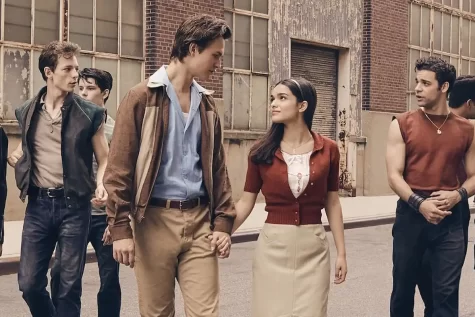A Review of Tennessee Williams’ “A Streetcar Named Desire” and Its Film Counterpart

Two of the original movie posters for A Street Car Named Desire (c) Warner Brothers
Arguably one of the best American playwrights of the 20th century, Tennessee Williams’ original script for A Streetcar Named Desire thoroughly expresses his talent and mastery of writing. If you are unfamiliar with the play, I definitely recommend you read or watch it.
For time’s sake, I will try to summarize it: A Southern belle in her 30s, Blanche DuBois, comes to live with her sister Stella and her brother-in-law Stanley in New Orleans (Williams’ favorite setting for his plays). Her time there is turbulent as Stanley antagonizes her, eventually raping her after a fight. Stanley then sends Blanche to a mental institution and the play ends with him comforting a sobbing Stella.
I spent two days immersed in the original script of this play in February of last year, fascinated by Williams’ control of language and expression of Southern Gothic themes. I had never considered watching Elia Kazan’s 1951 film adaptation, starring Vivien Leigh, Marlon Brando, and Kim Hunter, until recently, after my sister recommended it to me.
Presented with two narratives of the same story, I thought it would be interesting to examine their likeness and the film’s ability to portray Williams’ original work.
The two key components of Williams’ script that I picked up on was its portrayal of domestic life and a dichotomy between reality and Blanche’s consciousness. The root of the main conflict in the story comes from Blanche’s introduction to the already tumultuous marriage of Stella and Stanley. The strict application of 1940s gender roles to the household allows Stanley to control what happens in his residence, including what happens with his wife and her sister. Williams frequently illustrates scenes of domestic abuse, both verbally and physically. Stanley beats his wife while she is pregnant and rapes Blanche.
An extremely important part of the text is Stanley’s resemblance to a savage-like animal, wild and uncontrollable. Williams leaves subtle similes connecting Stanley to the characteristics of a beast and a dog. This adds depth to the scenes of abuse in the play as Stanley is portrayed as sadistic and inhumane. Connecting to the disparity of power in the household is Blanche’s fabrication of reality; she is unwilling to decipher reality, and cannot decide between real or fake. Blanche lies about her husband’s suicide and her work as a prostitute, hoping that no one finds out. Additionally, Blanche attempts to hide her face from a potential candidate for marriage, Mitch, so that he does not discover her age.
This dissociation from reality plays a vital role in the text as it outlines and overshadows Blanche’s mental regression, culminating in Stanley’s rape of her.
With these crucial elements of William’s script established, we must ask the question: does Kazan’s film successfully emulate them? To put it simply: yes.
Kazan’s attention to detail with the dialogue between Stella, Stanley, and Blanche presents everything that Williams worked for in the script to present a troubled relationship between the three.
Kazan is able to fully create a tense domestic scene that combines Stanley’s abuse with Blanche’s delusional mindset.
In deciding to cast Marlon Brando as Stanley, Kazan assigns a dynamic of intimacy between Blanche and her brother-in-law. The attention to Williams’ beastlike descriptions of Stanley come out full throttle in the film, most recognizable in his animal-like howling after beating Stella. Kazan’s work with lighting in the black and white film brings out Blanche’s struggles with reality. For her, light is the ugly truth because when it shines on her face, everyone can see how old she is. Kazan’s homage to this original detail in Williams’ script allows for the perfect representation of Blanche’s relationship to reality in contrast to her faceted mental state.
And, to top it off, the film has some really smooth jazz in its soundtrack, helping to bring the play to life on the screen.
The 1951 A Streetcar Named Desire film proficiently illustrates the material and themes Williams’ delicately created in his original text. The simplicity of a black and white film combined with the complexity of Williams’ script forms an enjoyable and entertaining cinematic masterpiece. As stated before, I highly recommend both the play and the film.

Joe Stern is a senior and captain of the rowing and quizbowl teams. His favorite past time activities include slamming nerds in Game Pigeon word games...












